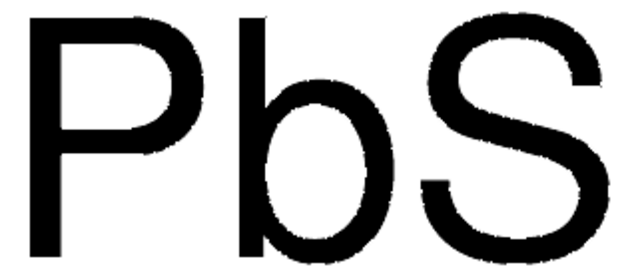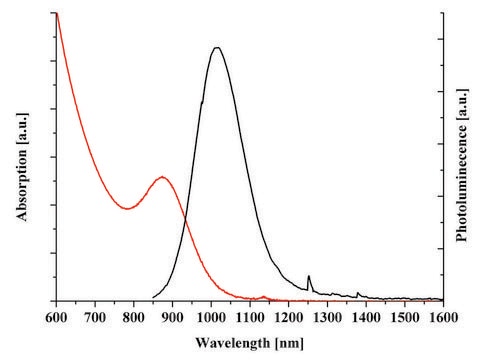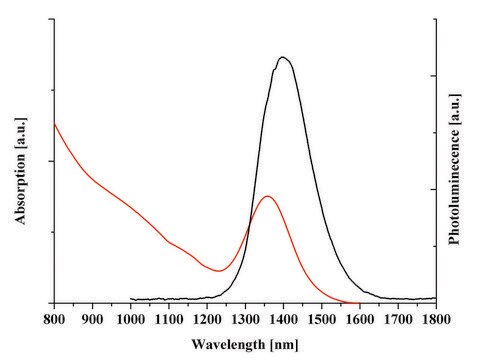925535
Infrared PbS quantum dots
λmax, 1550 nm, 100 mg/mL in toluene
Synonym(s):
Fluorescent nanocrystals, INFIQ® quantum dots, Lead based core type, QDs
About This Item
Recommended Products
form
liquid
Quality Level
packaging
pkg of 1 mL
concentration
100 mg/mL in toluene
particle size
<10 nm (Nanoparticle)
λmax
≤120 nm (FWHM)
1550 nm
storage temp.
2-8°C
InChI
1S/Pb.S
InChI key
XCAUINMIESBTBL-UHFFFAOYSA-N
Looking for similar products? Visit Product Comparison Guide
Related Categories
Application
Other applications of these materials include light detection and ranging (LIDAR), 3D laser scanning, solar cells, as well as Time of Flight (ToF) sensing.
Legal Information
signalword
Danger
Hazard Classifications
Aquatic Chronic 2 - Asp. Tox. 1 - Flam. Liq. 2 - Repr. 1A - Skin Irrit. 2 - STOT RE 2 - STOT SE 3
target_organs
Central nervous system
Storage Class
3 - Flammable liquids
wgk_germany
WGK 3
flash_point_f
39.2 °F
flash_point_c
4 °C
Certificates of Analysis (COA)
Search for Certificates of Analysis (COA) by entering the products Lot/Batch Number. Lot and Batch Numbers can be found on a product’s label following the words ‘Lot’ or ‘Batch’.
Already Own This Product?
Find documentation for the products that you have recently purchased in the Document Library.
Our team of scientists has experience in all areas of research including Life Science, Material Science, Chemical Synthesis, Chromatography, Analytical and many others.
Contact Technical Service






